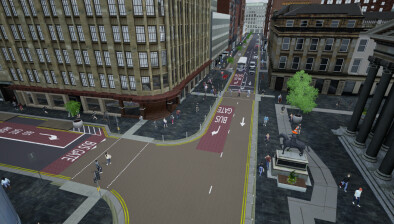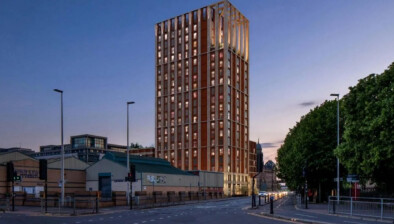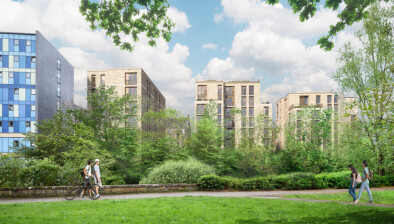Architects blame ‘wrong location’ for Glasgow Tower problems

The decision to build Glasgow Tower at the River Clyde instead of St Enoch Square is the root cause of all the problems which have beset the landmark, according to two leading architects.
The 417ft high structure is the tallest building in Scotland but has spent much of its 15 years closed to the public. The £10 million tower was also supposed to be able to rotate on its axis.
Visitors are currently only allowed to ascend the tower if winds don’t reach above 22mph, and it is closed from October to March every year.
Financial problems forced original plans for the tower to be built in St Enoch Square to be abandoned in favour of a move to the Science Centre at Pacific Quay.
Now two of Scotland’s leading architects say its engineering problems are down to the location on the wind and rain-battered waterfront.
 Neil Baxter, secretary of the Royal Incorporation of Architects in Scotland, believes that’s where the original problems began.
Neil Baxter, secretary of the Royal Incorporation of Architects in Scotland, believes that’s where the original problems began.
“The tower is one of those magnificent, innovative ideas that ultimately hasn’t really worked.
“Who’d have thought of putting a 400ft-high tower on a turntable? No one, is the answer – that perhaps tells you something.
“Problems arose from the outset and then persisted. The site is very exposed.
“The original planned location, at St Enoch Square, is enclosed. You’re always going to be more exposed to wind and the elements at a riverside site.
“I think moving the tower from St Enoch Square might be the root of the problem. It’s probably colder which could cause temperature-related problems.
“But it was an extraordinarily innovative idea. It was, and is, a world first.”
Peter Wilson, a leading Scots architect formerly of Napier University, said: “There wasn’t really any intention to build the tower. The project was resurrected as part of Glasgow’s bid to be City of Architecture in 1999.
“The decision to shift it from the St Enoch Centre was the problem – moving it to the reclaimed ground of a filled-in dock which is open to the elements.
“I think everything that’s happened stems from this decision.
“It sat on a giant ball-bearing on rings which never quite fitted. There were questions about the structural stability.
“The tower was a high-risk project and an architectural accident waiting to happen. It was a case of designing something which was purely an idea from a concept which had never been tested and expecting it to work first time.”
In July 2001, twenty people got to the top of the tower before the lift doors failed, due to the system overheating. In February 2002 it was discovered that the bearings in the rotating base were sunk by almost an inch, causing the tower to be shut for almost a year and a half.
In January 2005 ten people were trapped for five hours after a cable in the lift snapped, causing the emergency breaks to be triggered. In July 2014, after a four year closure, the tower reopened just to shut three days later after catching fire.
But Science Centre chief executive, Dr Stephen Breslin, said: “All the outstanding problems were fixed two summers ago.
“There’s no denying its chequered history but we’re back to a seven-day operation on March 23. The tower was enjoyed by more than 12,000 visitors last year.”















